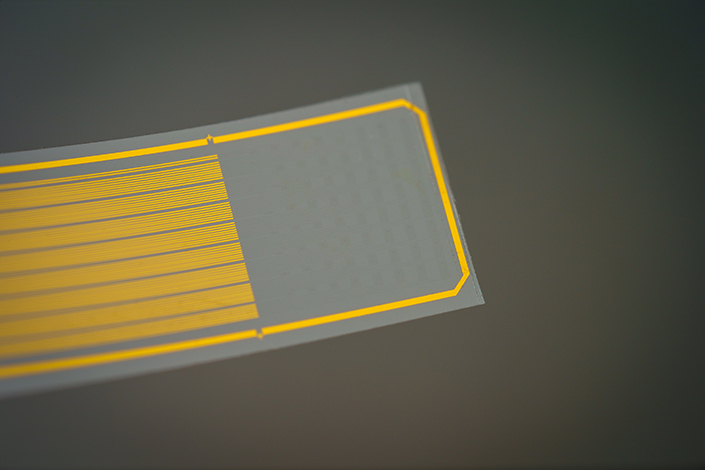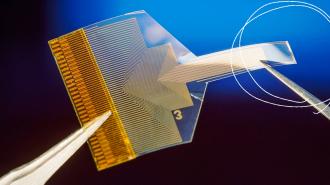University of California San Diego (UCSD) scientists have developed a transparent brain implant that, when combined with AI, can predict activity in deeper layers of the brain than any other implant sitting on the brain’s surface.
The challenge: Recording brain activity is hugely useful in medicine — it can not only help us understand how the brain functions, but also help doctors diagnose myriad health issues.
We now have a variety of techniques for recording brain activity, but each has its own strengths and weaknesses.
Implants placed on the surface of the brain can provide precise readings of activity in its outer layers, but they can’t tell us what’s going on deeper. Adding tiny needles to those implants and sticking them into the brain can allow them to read activity in slightly deeper layers, but that approach can cause inflammation and scarring that degrades the signal over time.
“This can provide a more comprehensive understanding of neural activity.”
Mehrdad Ramezani
Another technique called “calcium imaging” can reveal brain activity in layers just below the surface, too — it uses fluorescent dyes and a special microscope that shines laser light into the brain to measure the spikes in calcium levels that accompany neural activity.
During calcium imaging experiments, though, the head has to remain still under the microscope, which limits the technique’s usefulness.
What’s new? By making a brain implant out of the two-dimensional “supermaterial” graphene, the UCSD team found they could shine lasers through it — something that isn’t possible with traditional brain implants.

This meant they could record calcium activity below the transparent brain implant, while the implant recorded electrical activity on the brain’s surface at the same time. Then the two types of data can be used to train an algorithm to predict activity in deeper layers of a mouse’s brain based on recordings from the surface.
Now, scientists could know what was going on deeper in the brain without restricting the movement of the mouse.
“This can provide a more comprehensive understanding of neural activity in dynamic, real-world scenarios,” said co-first author Mehrdad Ramezani.
“We are eager to do our part to accelerate progress in better understanding the human brain.”
Duygu Kuzum
Looking ahead: The AI-powered implant couldn’t predict activity that is actually deep in the brain — the study only focused on neurons as far down as 225 µm (approximately 0.009 inches) — but that’s still more information than would otherwise be available with a surface implant.
The researchers plan to test their transparent brain implant in different animals next, with the goal of reaching human trials. They have also made the system available to other researchers in the US and Europe.
“This technology can be used for so many different fundamental neuroscience investigations, and we are eager to do our part to accelerate progress in better understanding the human brain,” said study senior author Duygu Kuzum.
We’d love to hear from you! If you have a comment about this article or if you have a tip for a future Freethink story, please email us at [email protected].





